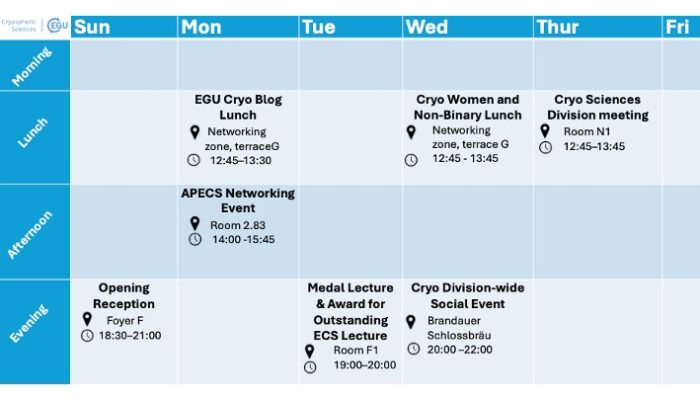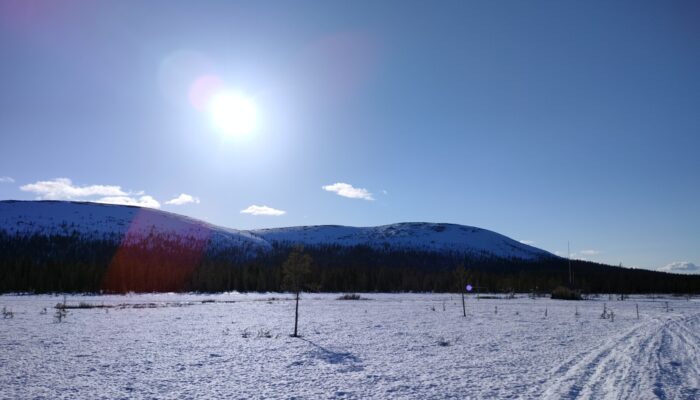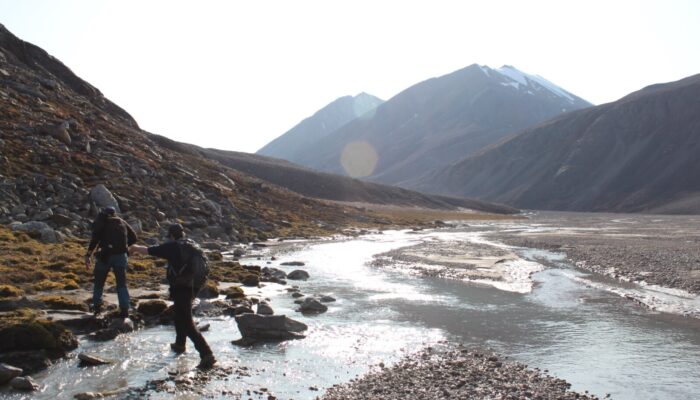Are you planning on attending the EGU General Assembly happening very shortly in Vienna, Austria? – We are! As every year, we are very much looking forward to connecting with you during the various events and are very excited to already share some of our highlights with you today. Keep an eye open on social media for daily cryosphere highlights during EGU! Would you like to meet us? Find us ...[Read More]
If you didn't find what you was looking for try searching again.
Cryospheric Sciences
The joy of collecting snow meltwater: a problem-solving hunt for meltwater in Northern Finland
We know that climate change is affecting many aspects of what we have considered “stable” throughout a long period of modern times. One of many impacted and changing factors is snow and thereby also snow meltwater. One way to study meltwater is to trace it by the usage of stable water isotope signals and we plan to use it by asking: Are we underestimating the portions of snow meltwater in differen ...[Read More]
Cryospheric Sciences
SciComm notes: can Granny understand your science?
As an EGU division blog, we facilitate that the most recent cryoscientific insights reach a wider audience. To do this, we have a team of experienced editors (and former authors), but we also love helping first time authors getting experience with outreach. But if you have ever written an outreach piece, you might know that it can be more difficult than expected to write down your research in simp ...[Read More]
Cryospheric Sciences
You can’t unsee it – the impact of a good visual for scientific data
We are visual learners after all and for many of us, creating visual content is far more out of our comfort zone than the already hard earned skills of writing itself. Still, creating an accessible image can be pivotal to not only the success of your paper, but also the reach of your science in general. Today’s post started with a climate figure that went viral because of its similarity to the ico ...[Read More]
Cryospheric Sciences
Give your ears a holiday treat: our favourite polar podcasts
December is a busy month, and while we are busy preparing gifts and a mindful attitude for the festive season, finishing up projects for the year, at some point, we close the laptop and take our ride of choice home. So as a little treat for your ears, we found some 8 (+1) polar podcasts for those in need of a little inspiration. The podcasts are tackled from points of natural science, policy, hist ...[Read More]
Cryospheric Sciences
UndercoverEisAgenten – Permafrost, drones and young explorers investigating Arctic change
The “UndercoverEisAgenten” project takes us on a drone journey over the ever-changing permafrost landscapes. Initiated by the Alfred Wegener Institute (AWI) for Polar and Marine Research, the German Aerospace Center’s (DLR) Institute of Data Science, and the Heidelberg Institute for Geoinformation Technology (HeiGIT), this venture is about more than just capturing images. It̵ ...[Read More]
Cryospheric Sciences
antARcTica
In the frozen expanse of Antarctica, where the remote environment tests the limits of scientists, a unique relationship between science and art can emerge. As the isolation, weather and beauty of the ice-covered continent introduce themselves, some Antarctic individuals find solace in the realm of art. In this blog post, we delve into the interplay between the world of scientific exploration and t ...[Read More]
Cryospheric Sciences
Small step for reindeer – large leap for humankind?
Since several decades, there’s a lot of discussion in the permafrost ecosystem community on “rewilding” and “return to a natural state” in order to protect ecosystems and to reduce the impacts of climate change. Reindeer and other herbivores influence the insulation regime of the ground and could thereby preserve the frozen state of permafrost ground. Is there a way to utilise this effect to our b ...[Read More]
Cryospheric Sciences
Looking for the Window during Fieldwork
Arctic fieldwork is a meticulous dance with the ever-fickle weather, where nature’s temperament can determine the course of scientific endeavors. Rain or fog can swiftly put a halt to even the most well-laid plans. This holds true for Greenland, where proximity to the ice cap doesn’t shield researchers from the capriciousness of the climate. In August 2023, the Deep Purple ERC Project ...[Read More]
Cryospheric Sciences
We are back – with 4 Arctic fieldwork stories!
You might have missed our weekly blog posts, but we are back! This week’s post highlights four field work campaigns our cryo community conducted. Join us on a journey to Greenland, Svalbard and Alaska to learn about methane emissions, glacier flows, tundra fires and ice microbes. Chasing methane in Greenland The subglacial environment of the Greenland Ice Sheet is a relatively new discovered ...[Read More]










